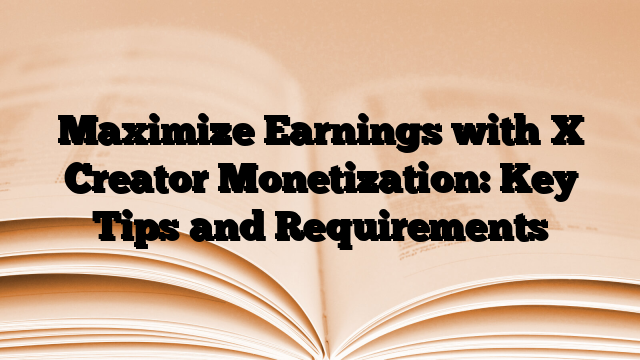1. A rough estimate of the multiple would be one times the total revenue.
This is a belief that is held within the accounting profession with the same level of fervour as anything else that we have encountered.
It gives the impression that accounting practises are valued based on their annual gross sales, which is a criterion that is distinct from the criteria used to evaluate other types of enterprises.
The majority of other types of companies are evaluated by using a multiple of their annual net cash flow to the owner. The term “cash flow to owner” refers to a broad category that encompasses things like “net income” as well as “owner salary,” “payroll taxes and benefits paid on behalf of the owner,” “depreciation,” and any other owner-directed expenditures. This multiple is approximately 2.5 times a company’s cash flow to the owner, and it is used for the majority of enterprises. The cash flow to owner multiple for service businesses is often closer to 1.5 to 2 times the annual revenue. Consequently, if accountants were like everyone else, we would value our firms at a multiple of 1.5 to 2 times the cash flow to the owner. But, we are different.
The reason for this is presumably due to the fact that a purchase of an accounting practise will have control over aspects such as owner cash flow. It can be drastically different depending on how the practise is managed. This mentality can sometimes be detrimental to the value of a company, even when the cash flow is healthy. At other instances, it helps the value, particularly in situations with a poor cash flow. This frame of thinking can work to the benefit of either the customer or the seller of a product. On other occasions, it may be necessary to put forth additional effort to overcome it.
You may probably understand that not all practises are sold for an amount equal to one year’s worth of gross fees. A number of other elements come into play when determining whether a practise will sell for more or less than the general rule of thumb. Naturally, having awareness of those things is going to be a significant aid in appropriately valuing your practise. The most customers will be attracted to a pricing that is accurate, but you should avoid “leaving money on the table.”
2. Do You Prefer Cash or Earnout?
“Twenty percent of total collections each year for the next five years.” When practise owners sell their businesses on their own, structuring their agreements in this manner is a standard practise. This exemplifies the mentality of many accountants, who place all of the deal’s risk on the seller while absolving the buyer of all responsibility for it.
By “one times annual gross revenues,” many accountants imply “twenty percent of collections each year for five years.” But in many transactions, using this technique will result in the seller receiving a MUCH LESS profit in the end. This may be as much as a fifty percent decrease in the worst-case scenario. There being no interest paid, and more significantly, because the buyer is allowed to take too little of a financial stake in retaining customers, those customers will be lost. This is in addition to the loss that would have occurred due to natural attrition.
If the seller can get all of the money or a cash equivalent up front and doesn’t have to worry about keeping their customers, this is a much more favourable circumstance for the vendor. The danger of losing customers is something that we like to conceptualise in terms of a continuum. At one extreme of the continuum (a structure that is based only on an earn-out), the seller is responsible for bearing all of the risk. At the opposite end of the continuum, where all cash is paid at the time of closing, the buyer assumes all of the risk. Our objective is to pass on to the purchaser as much of the risk as we possibly can. Why? Because the buyer has the most control over how well clients are served, and consequently has the most say in whether or not those clients stick with the new owner, this is an important consideration.
There are several options available that can provide some peace of mind to the purchaser while still guaranteeing that the vendor is not entirely responsible for the risk. You are not required to sell on an earnout arrangement that is completely cash-based. How comfortable purchasers are with the process of transition has an impact on both the price and the terms of the transaction. (Our method incorporates intensive counselling on client retention as well as efficient transitioning strategies. Our previous customers have reported that our transition coaching provided them with outstanding value.
When we refer to “one times gross,” we are referring to a present value that is equal to one times the gross amount that the seller will really end up receiving. This is the most essential takeaway from this.
3. “The greatest number of prospective purchasers.”
If there aren’t any potential purchasers, the value of the practise is nothing. When they are ready to retire, the owners of some businesses located in highly rural areas are forced to face the terrible reality of having to cope with this situation. When you only have to deal with one or two buyers, the practise is not worth nearly as much as it is when you have to deal with one hundred purchasers. The greatest strategy is to have as many different types of buyers as possible in the mix. However, in order to find those 100 buyers, time and marketing reach are required.
(Poe Group Advisors possesses a sizable database of potential buyers and can assist you in performing a speedy evaluation of those buyers so that you only deal with the most serious and qualified prospects.)
4. “Looking for the ideal purchaser.”
The value of your practise will vary depending on who purchases it. The aspects of risk tolerance, financial status, capacity for taking on more work, capacity for taking on more work, technical talents, managerial style, and interpersonal skills will all play a role in determining the best possible fit. Talking with customers who are the best match for what you’re selling is essential if you want to obtain the best offer.
Some people who are selling their businesses are in the fortunate position of already knowing other business owners who would be a good fit for their company, as well as those who have the financial means and the desire to buy their company. However, if there is only one buyer, it can be quite challenging to negotiate with them. Spending time trying to locate purchasers who are a good fit for your practise can be a time-consuming distraction that prevents you from continuing to maintain a healthy practise that is appealing to the market. If you are in negotiations with a single buyer, one of our recommendations is that you limit the amount of time available for such negotiations.
5. “Salable Value”
When compared to another market, such as a stock exchange, where thousands of transactions take place on a daily basis, this particular market cannot be described as efficient. A mathematical formula will not provide an appropriate assessment of the value of your practise.
It is possible to discover two companies that are essentially equal to one another in terms of gross revenue, service mix, cost structure, and cash flow to owner, yet the saleable values of the two companies may be very different from one another. This may be the result of variances in the firm’s culture, location, use of technology, presence – or lack – of efficient systems and processes, or any one of the hundreds of different ways in which businesses might be unique from one another.
Consider thinking about things in terms of “asking price” rather than “saleable value,” since the latter is more concrete. It is of the utmost importance to give serious consideration to the price that you will ask for something, not only because you do not want to leave any money on the table, but also because you do not want to scare away potential interest by appearing to be overpriced.
Please let us know in the comment section if you would like to share your thoughts.



